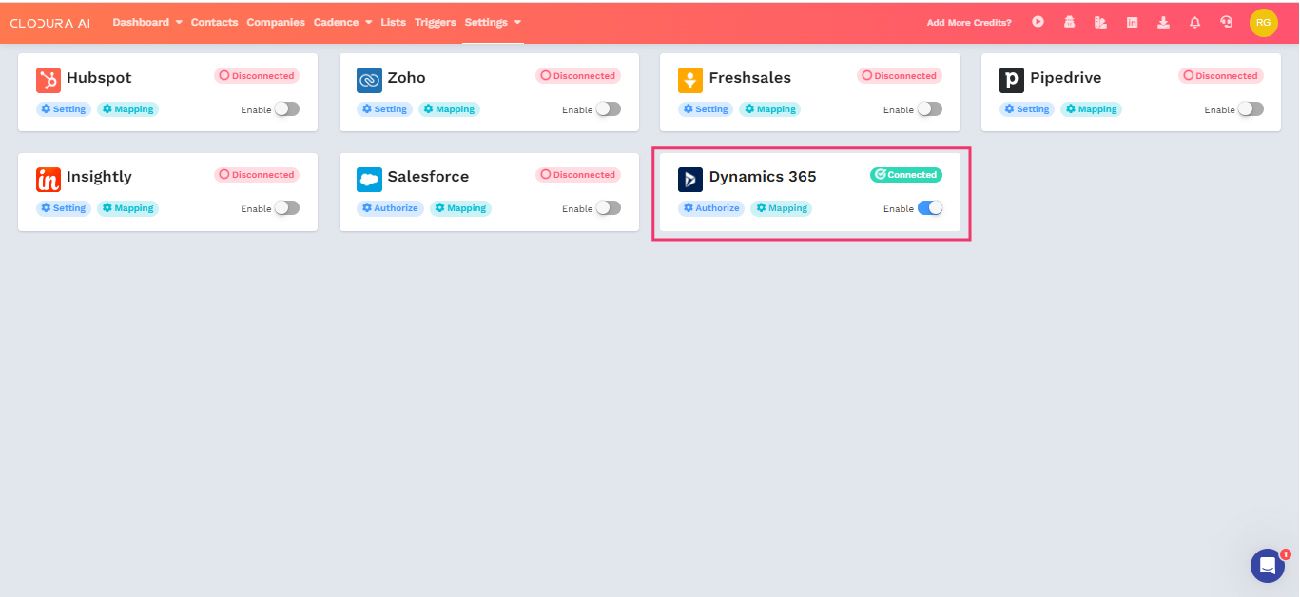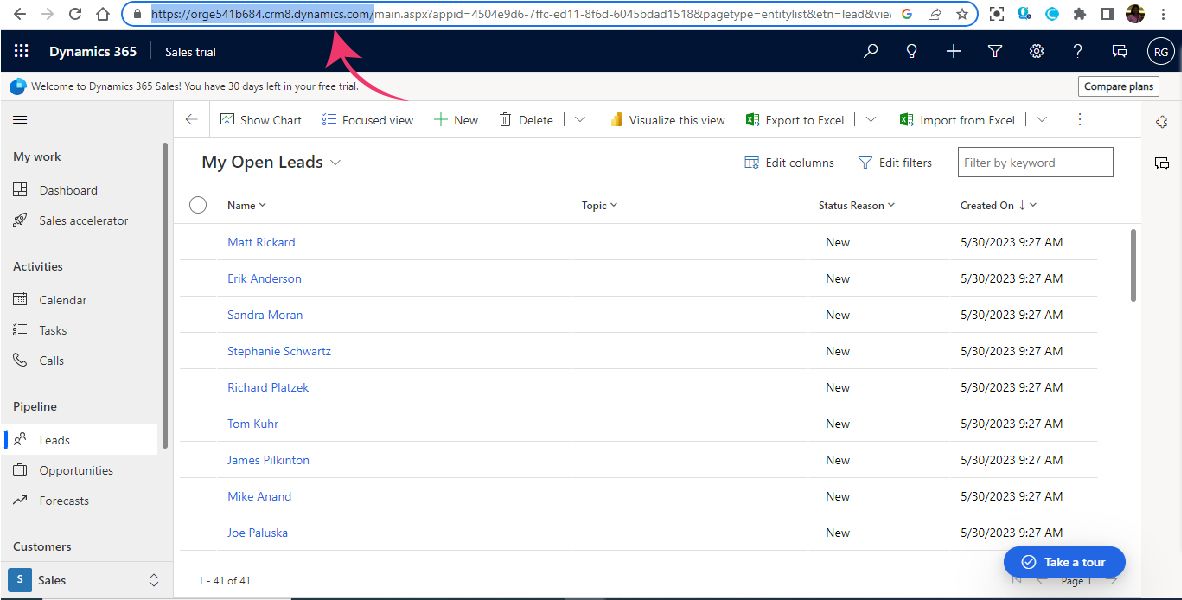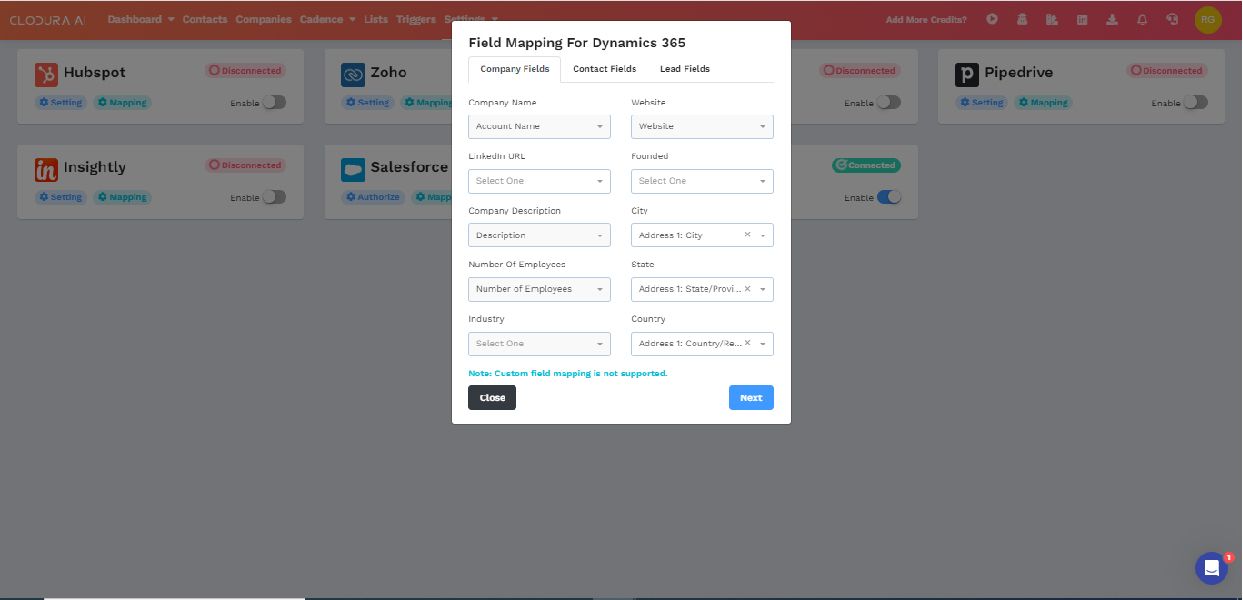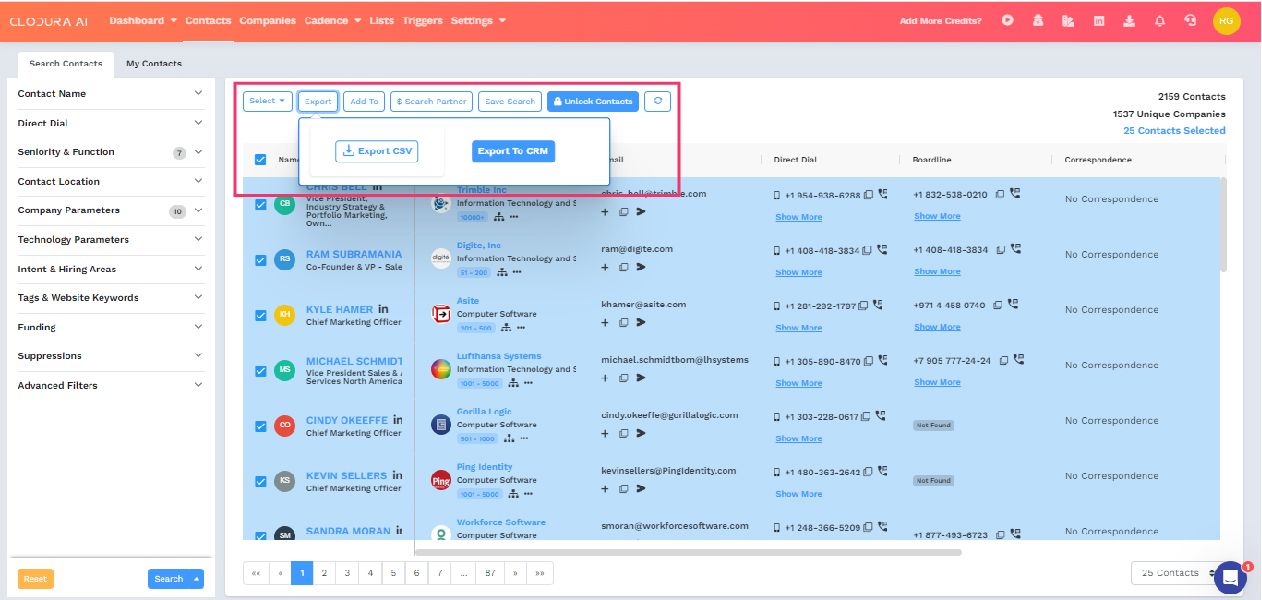Step 1: Login to Clodura
- Visit the Clodura website at https://app.clodura.ai/.
- Enter your login credentials and click Login.
Step 2: Authorize Clodura to Access Your Dynamics 365 CRM Account
- In the Clodura dashboard, click Settings.
- In the CRM Integrations section, click Dynamics 365 CRM.
- In a new browser tab or window, login to your Dynamics 365 CRM account.



